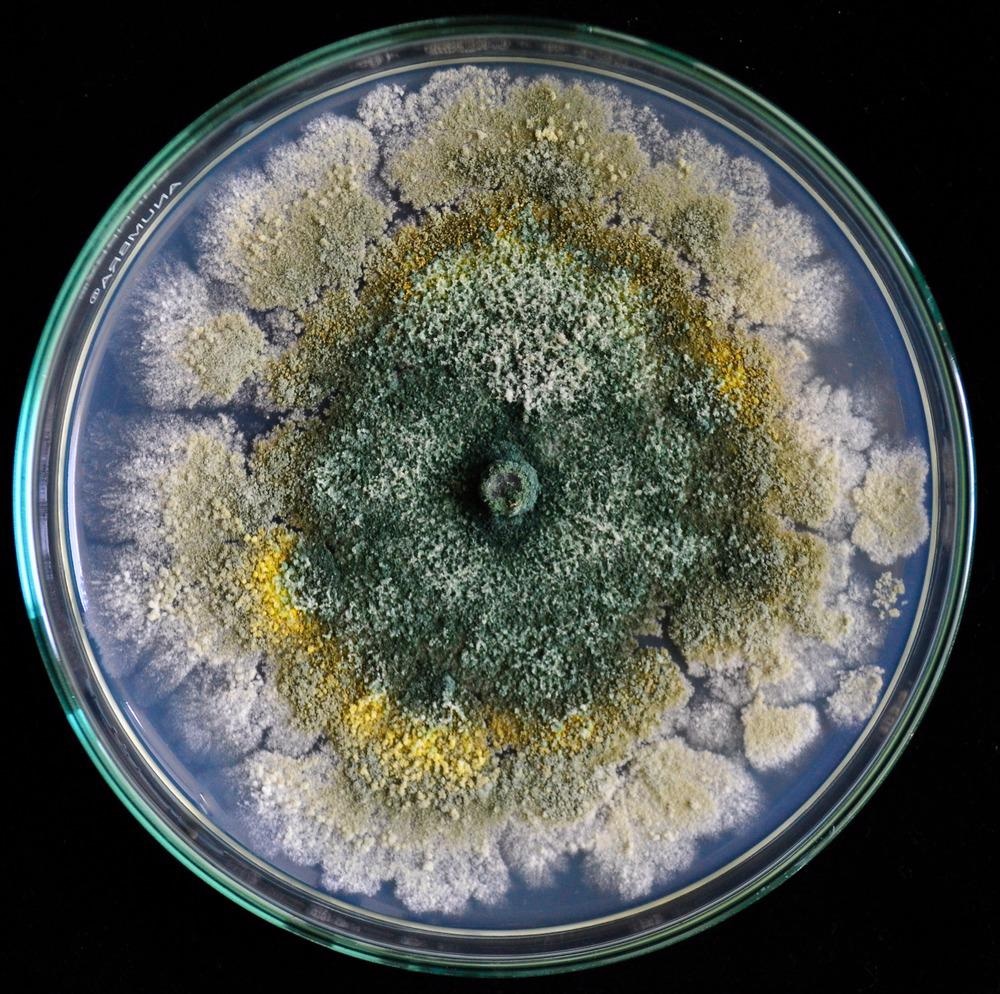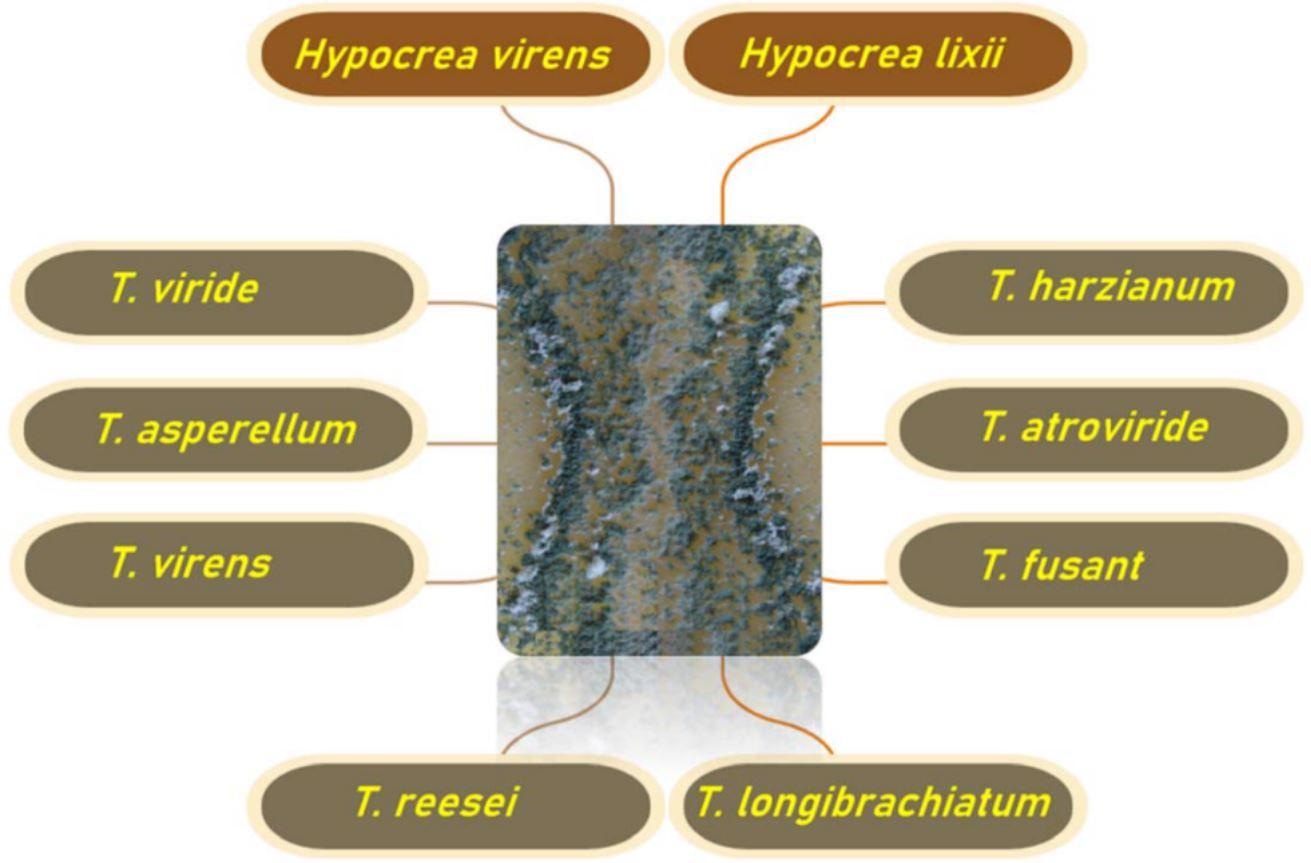 By Surbhi JainReviewed by Susha Cheriyedath, M.Sc.Apr 7 2022
By Surbhi JainReviewed by Susha Cheriyedath, M.Sc.Apr 7 2022In a review recently published in the Journal of Fungi, researchers explored how the Trichoderma genus could be used to develop methodologies for the mycosynthesis of metal nanoparticles (NPs), discussing their applications in agroecosystems.

Study: Trichoderma: An Eco-Friendly Source of Nanomaterials for Sustainable Agroecosystems. Image Credit: BENPOL/Shutterstock.com
The potential relevance of innovative Trichoderma-NP bioconjugates as a viable alternative for sustainable agriculture was also covered. The potential advantages and drawbacks of developing practical goods and techniques to produce trichogenic NPs were also highlighted.
Myco-Nanoparticles in Agriculture
The application of myco-nanoparticles in agriculture is still in its infancy, particularly in terms of their interactions with agriculturally beneficial bacteria. While in vitro studies have been published in greenhouse conditions, in vivo studies are now being conducted. In terms of efficiency and the creation of different metabolites under ideal conditions, biogenic synthesis based on fungi has several advantages.
Advantages of Trichoderma
The use of Trichoderma harzianum is one of the ways for reducing the adverse effects of heavy metals on plants. Agrochemicals using nanostructured materials have recently emerged as a potential agricultural solution.
A number of Trichoderma species have been used in nanotechnology, especially for the production of metal NPs. Their resistance to a variety of nanocompounds has recently been found, but little is known about their role in the synthesis of metallic NPs.
The use of this green bio-based, environment-friendly, and cost-effective strategy could be a viable alternative for the successful production of sustainable nanomaterials. Several research works have described an ecofriendly and quick method of NP manufacturing using the biocontrol agents Trichoderma and Hypocrea (Teleomorphs), which could potentially overcome the limitations of chemical and physical methods of NP production.

The top ten Trichoderma species used to produce safe metal nanoparticles through mycogenic synthesis. © Alghuthaymi, M. A., Abd-Elsalam, K. A., AboDalam, H. M., et al. (2022)
Research Findings
In one of the studies, T. viride was found to be able to break down and utilize nitrogenous explosives (trinitrotoluene, TNT) at levels of 50 and 100 parts per million to meet the nitrogen requirements for normal development. When 75 isolates from five different Trichoderma species were evaluated, T. virens was found to be the most efficient generator of AgNPs. When T. reesei fungus was cultivated in circumstances containing 0.1% corn steep liquor, 10% biomass removed to create CFE, and 10 millimolar AgNO3, they produced the most AgNPs. Copper NPs ranged in size from 5 to 25 nanometers, while silica NPs ranged from 12 to 22 nanometers.
Selenium (Se) NPs with diameters ranging from 49.5 to 312.5 nanometer were discovered to be hexagonal, irregular, and near-spherical in shape. The extracellular synthesis of SiO2 NPs from rice husks was established using the T. harzianum (MF780864) isolate. Against IMR 90, U251, and A549 lung cells, as well as human breast cancer cells MCF-7 and MDA-MB-231, cell viability increased considerably when the drug dosage concentration was increased.
In terms of hatching rate, embryo viability, heartbeat counts, and body mass index, the zebrafish model was utilized to investigate the toxicity, and no toxicity was found in nano-copper and nano-silica when exposed to 0.5, 3, and 30-gram concentrations.
In vitro tests of AgNPs made with T. virens HZA14 antifungal effectiveness against S. sclerotiorum found that sclerotial formation, hyphal development, and myceliogenic germination of sclerotia were all suppressed by 100%, 93.8%, and 100%, respectively.
Conclusions
In conclusion, this study elucidated the mycosynthesis of metal nanoparticles using Trichoderma species in agricultural applications.
The authors believe that creating agrochemicals that use Trichoderma strains to make green NPs could be more environmentally friendly. They also mentioned that since Trichoderma is one of the most commonly utilized fungi for NP mycosynthesis, it's probable that it has tolerance mechanisms for these structures that may be combined to create products that improve agricultural production while also treating plant diseases in the field.
It was observed that in comparison to chemical and physical approaches, the synthesis of NPs by advantageous fungi such as Trichoderma is new, cost-effective, and environmentally favorable. The reactivity, stability, and behavior of NPs were all influenced by their form and size.
The research team emphasized that further research is needed to examine the interaction of Trichoderma with heavy metals in a heterogeneous system under field conditions. Understanding transport routes and NP penetration in plants are crucial to realizing the potential benefits of NPs produced by helpful bacteria in the agricultural industry.
By combining the bio-fungicides for plant disease control with the antimicrobial impact of mycogenic NPs, antifungal efficacy could be increased through synergistic interaction, allowing for a lower fungicide dose and, as a result, preventing fungal pathogen resistance development.
Reference
Alghuthaymi, M. A., Abd-Elsalam, K. A., AboDalam, H. M., et al. (2022) Trichoderma: An Eco-Friendly Source of Nanomaterials for Sustainable Agroecosystems. Journal of Fungi 8(4) 367, https://www.mdpi.com/2309-608X/8/4/367
Disclaimer: The views expressed here are those of the author expressed in their private capacity and do not necessarily represent the views of AZoM.com Limited T/A AZoNetwork the owner and operator of this website. This disclaimer forms part of the Terms and conditions of use of this website.